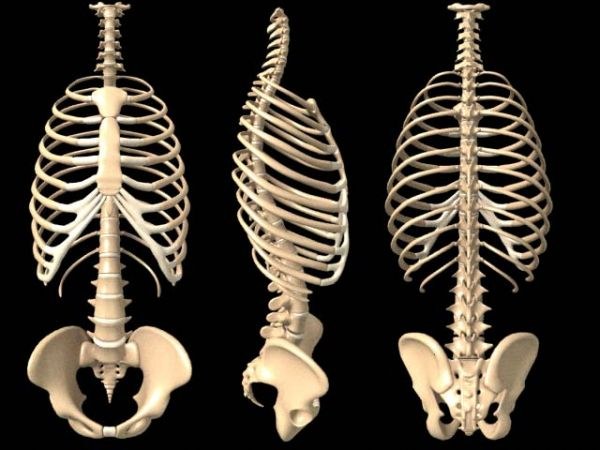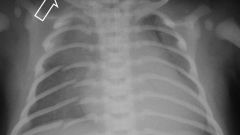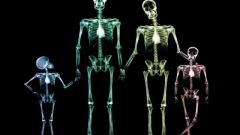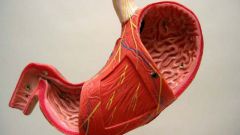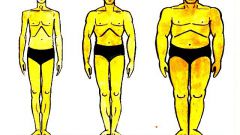Heart and lungs – one of the most important organs in the human body. If no hands or feet, the body still can, it's okay to exist without breathing and blood circulation he can't deal with life functions. So nature intended special protection of these organs rib cage.
There are 24 ribs that are divided in pairs (i.e. 12 pairs) attached to the vertebrae bones. The edge when considering has 2 end, on the front – a gradual transition into cartilage tissue, and on the back end – go to the head bump. Just the rear end of the rib connects with the thoracic vertebrae.
In appearance, the fin has a convex-concave structure. On the inner side, you can see the special groove, where in the body are nerves and blood vessels. Of the 12 pairs 10 connected to the breast bone cartilage tissue.
The ribs are their names. So the first 7 pairs are called "true" 3 "false". The other 2 pairs are called "fluctuating", because they have no connection with other ribs or with the sternum.
Interesting, but "set" of 12 pairs is not common to man. Sometimes because of genetic reasons or random mutations, 11 and 12 of the pair may be absent, or present extra 13th. These cases are officially registered and described.
In addition, the lower ribs can be removed with surgery. This is done for medical reasons or for the sake of aesthetics. By removing these edges can make the waist several already.
Because we know that God created eve from Adam's rib, then in Europe for a long time it was believed that men must be one rib fewer than women. Believed in it so strongly that to deny such ideas happened only in the sixteenth century Andreas Veseljem, the founder of scientific anatomy.
Andreas was doing the autopsy that at the time was strictly forbidden. He secretly filmed the gallows with the gallows, brought home in pieces and in the deepest secrecy he was engaged in scientific research.
In the course were bribing the cemetery guards, who allowed him to dig svejesobranna corpses. Without high patronage, first of Charles V and then Philip II, the scientist couldn't do it long with impunity to carry out his experiments, nevertheless, he made up his anatomy and made more than two hundred amendments to the errors of Galen, the ancient anatomist. So the truth gradually took its place in the Treasury of scientific knowledge.
A natural "armor" of a person
There are 24 ribs that are divided in pairs (i.e. 12 pairs) attached to the vertebrae bones. The edge when considering has 2 end, on the front – a gradual transition into cartilage tissue, and on the back end – go to the head bump. Just the rear end of the rib connects with the thoracic vertebrae.
In appearance, the fin has a convex-concave structure. On the inner side, you can see the special groove, where in the body are nerves and blood vessels. Of the 12 pairs 10 connected to the breast bone cartilage tissue.
The ribs are their names. So the first 7 pairs are called "true" 3 "false". The other 2 pairs are called "fluctuating", because they have no connection with other ribs or with the sternum.
Interesting, but "set" of 12 pairs is not common to man. Sometimes because of genetic reasons or random mutations, 11 and 12 of the pair may be absent, or present extra 13th. These cases are officially registered and described.
In addition, the lower ribs can be removed with surgery. This is done for medical reasons or for the sake of aesthetics. By removing these edges can make the waist several already.
An interesting fact about ribs
Because we know that God created eve from Adam's rib, then in Europe for a long time it was believed that men must be one rib fewer than women. Believed in it so strongly that to deny such ideas happened only in the sixteenth century Andreas Veseljem, the founder of scientific anatomy.
Andreas was doing the autopsy that at the time was strictly forbidden. He secretly filmed the gallows with the gallows, brought home in pieces and in the deepest secrecy he was engaged in scientific research.
In the course were bribing the cemetery guards, who allowed him to dig svejesobranna corpses. Without high patronage, first of Charles V and then Philip II, the scientist couldn't do it long with impunity to carry out his experiments, nevertheless, he made up his anatomy and made more than two hundred amendments to the errors of Galen, the ancient anatomist. So the truth gradually took its place in the Treasury of scientific knowledge.
